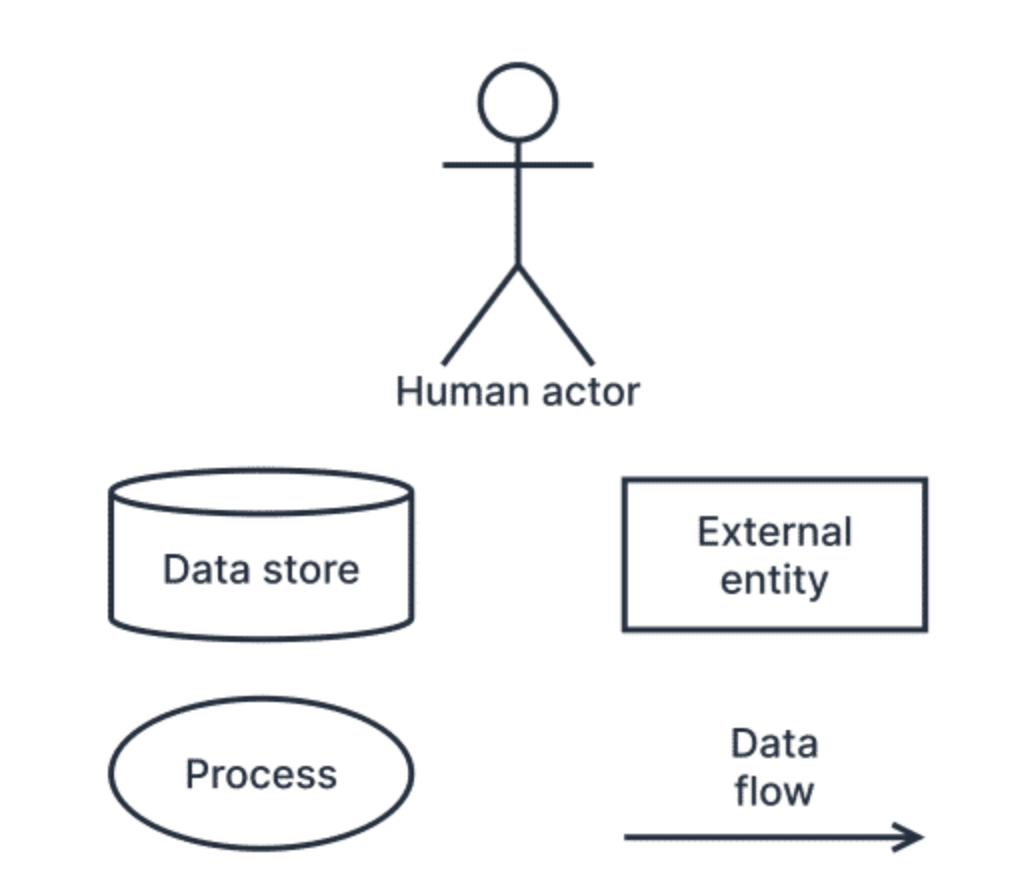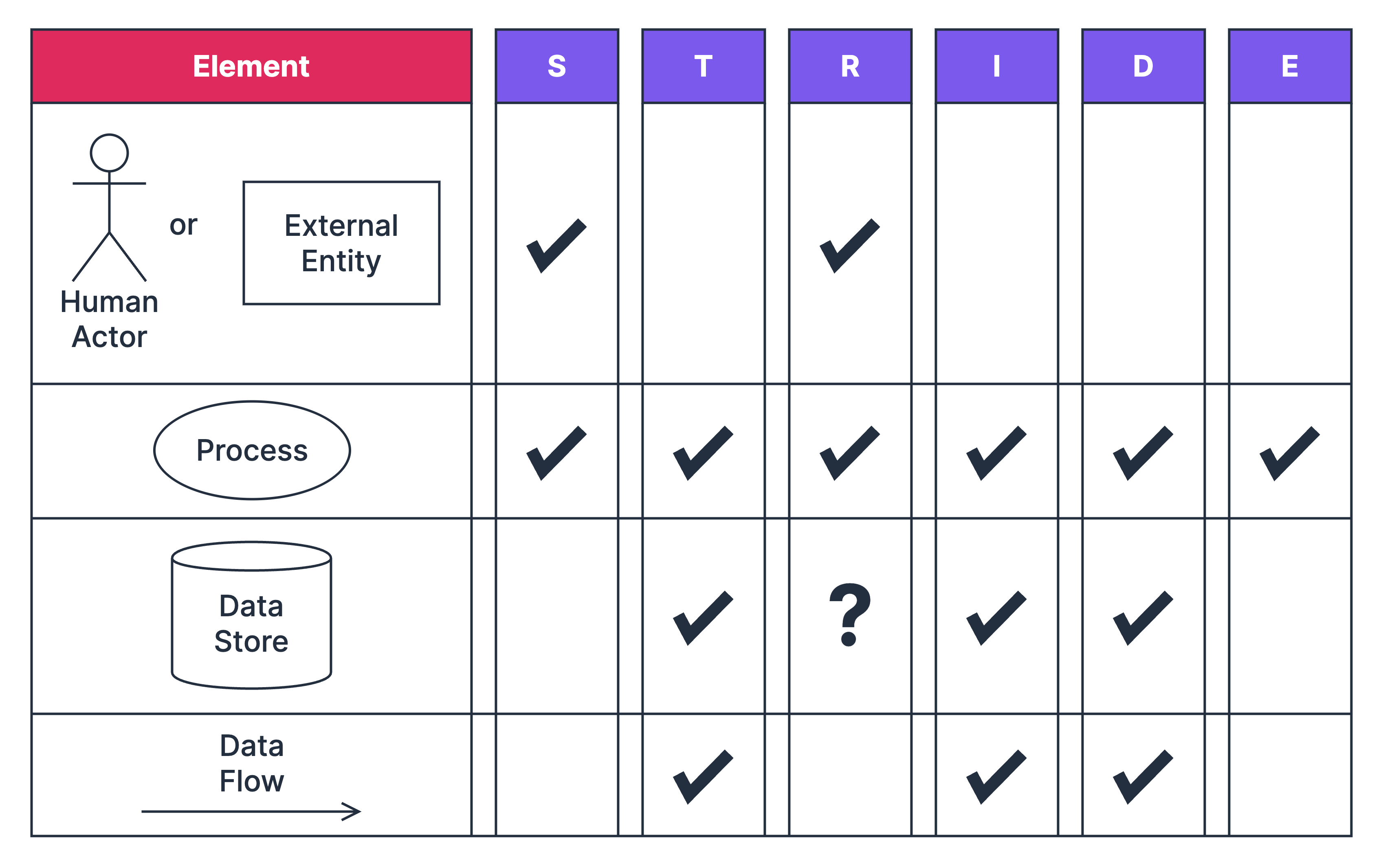What is Threat Modeling?
- Structured representation of all the information that affects the security of an application.
- Structured approach to identifying, analyzing, and mitigating potential security threats in a system, application, or network.
- Helps teams anticipate risks and design countermeasures before attackers can exploit vulnerabilities.
- When should you do it? Early and continuously in the development lifecycle.
- Typical steps? Identify assets, Enumerate threats, Assess risks, Apply mitigations, Validate.
- Common methodologies? STRIDE, DREAD, PASTA, Attack Trees
- STRIDE vs DREAD? STRIDE categorizes threats, DREAD quantifies risk.
- Attack trees and Data Flow Diagrams (DFDs) can be used to visualize threat models.
How to do Threat Modeling?
Diverse perspectives:
- Make sure you have diverse perspectives involved in the process:
- Business Persona:
- Focuses on business outcomes, and the value being delivered to customer.
- Intimately understands the functional and non-functional requirements of the workload.
- Developer Persona:
- Understands how the system works, thinks about how to implement mitigations.
- Adversary Persona:
- Unauthorized user roleplay – helps devise threats.
- Takes advantage of design flaws to achieve a particular objective.
- Defender Persona:
- Defines security controls to mitigate threats devised by adversary.
- Evaluates whether proposed mitigations are manageable in terms of operational support, monitoring, incident response.
- AppSec SME:
- Familiar with the threat modeling process – moderates discussions.
- Depth of IT and security knowledge.
- Makes sure balance between security and customer outcomes is met.
- Business Persona:
Threat Modeling Process
What are we working on?
- Model the system so that there’s shared understanding between teammates.
- Define the scope.
- Diagram doesn’t need to be 100% accurate, have necessary simplifications.
- Ask yourself: “Will adding this help us to find more threats overall?” when deciding whether to include a particular detail in the system model.
- Too much detail may become a distraction from finding threats.
- Use Data Flow Diagrams (DFDs) to model the exchange of data between system elements.

- processes: receive data, perform computation, output data.
- data stores: data kept at rest.
- external entities: elements you don’t control — outside your system boundaries.
- human actors: differentiate between external entities and human actors because threats and mitigations may be different.
- data flows: actually list down the data that will be contained in the flows
- trust boundary / zone of trust: any place where data changes its level of trust. within a zone of trust, all elements are considered to be equally or similarly trusted – security controls are often applied at trust boundaries.
- Control plane might be ignored for a simplistic view, but it is useful for identifying internal threats so it may necessary in real world systems.
What can go wrong?
- What threats can occur? What is their likelihood and impact? (Risk = Likelihood*Impact)
- Apply STRIDE per element to identify threats
- Spoofing (violates authenticity) — Mitigate with authentication
- Tampering (violates integrity) — Mitigate with signatures (hashing), minimize human access to production data (including config, code, etc)
- Repudiation (violates non-repudiation) — Mitigate with append-only, immutable logging
- Information Disclosure (violates confidentiality) — Mitigate with encryption, least privilege access controls
- Denial of Service (violates availability) — Mitigate with rate limits (throttling), least privilege access controls
- Elevation of Privilege (violates authorization) — Mitigate with authorization, access controls
- Use threat grammar to write about identified threats:
[threat source] [prerequisites] **can** [threat action], **which leads to** [threat impact], **negatively impacting** [impacted assets].- threat source: entity (a threat actor/internet based threat actor/internal or external actor
- prerequisites: conditions required for attack to be viable (with access to another user’s token/with admin access)
- threat action: actions (spoof another user/tamper with data in database/make thousands of concurrent requests)
- threat impact: direct impact of successful threat action (unauthorized access to user’s bank account info/modify the username for all time high score/web app unable to handle requests)
- impacted assets: (user banking data/video game score list/web app)
- can additionally have “impacted goal” as well (CIA)
- Can use threat composer tool to structure your threats.
- Assume there are no mitigations at this stage – focus only on possible threats.
What are we going to do about it?
- Prioritize threats and select mitigations.
- Handle Risk:
- Avoid: Remove the feature if not essential to business.
- Mitigate: Administrative (background checks on personnel, policy), Technical (encryption, authentication)and Physical mitigations (fences, security guards, locks)
- Transfer: CDNs, Outsourcing, MSSPs, Contracts/SLAs, Cyber Insurance
- Accept: If this risk is low and it is not a critical application, consider accepting it to save mitigation expenses.
- Apply security controls such as least privilege, secure defaults, encryption, authentication, monitoring/logging, segmentation, other AWS native security services.
Did we do a good enough job?
- Repeat the STRIDE per element process after you have applied mitigations to ensure other threats didn’t open up.
- Validate that mitigations successfully implemented.
- Improve the process itself, finetune it for your org to make it better over time.
